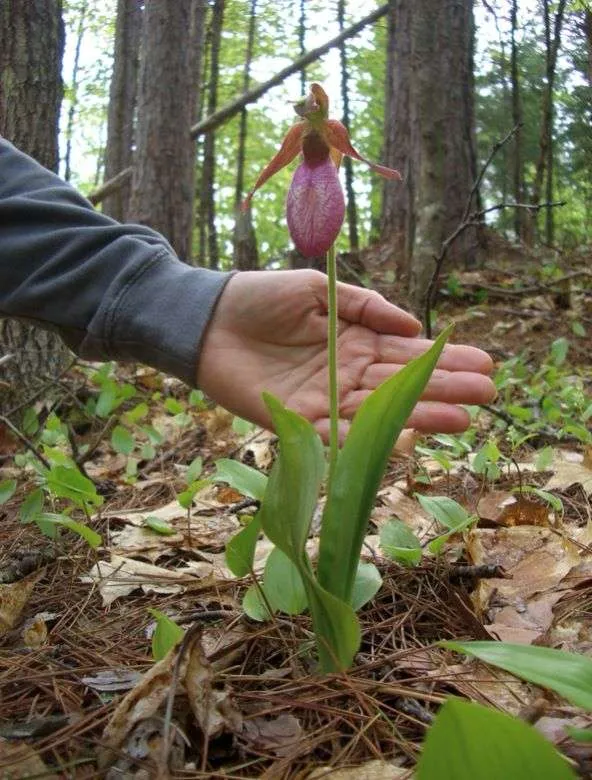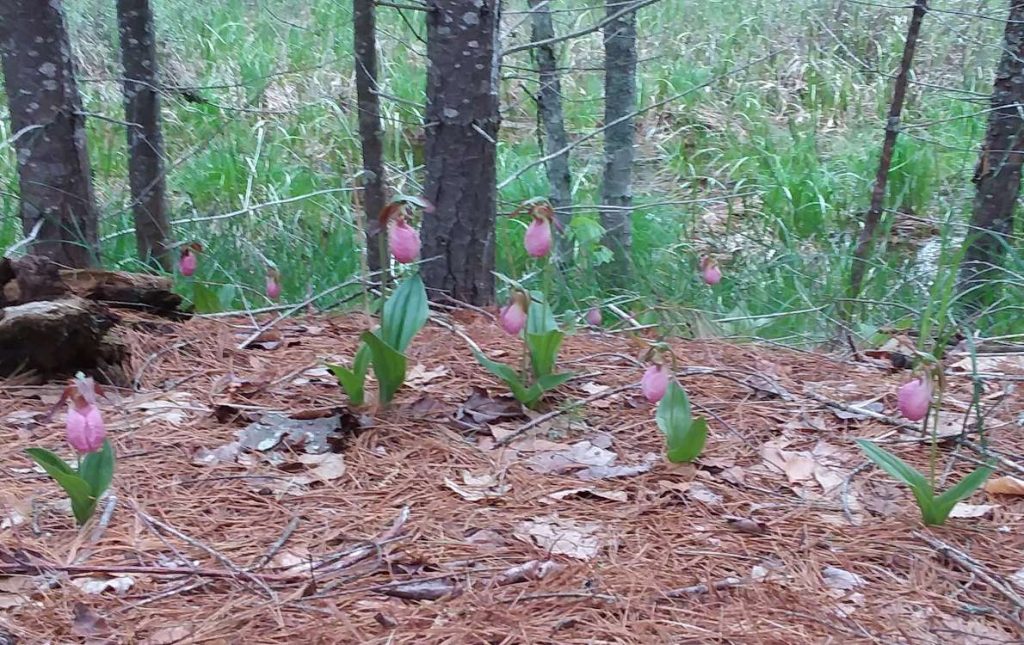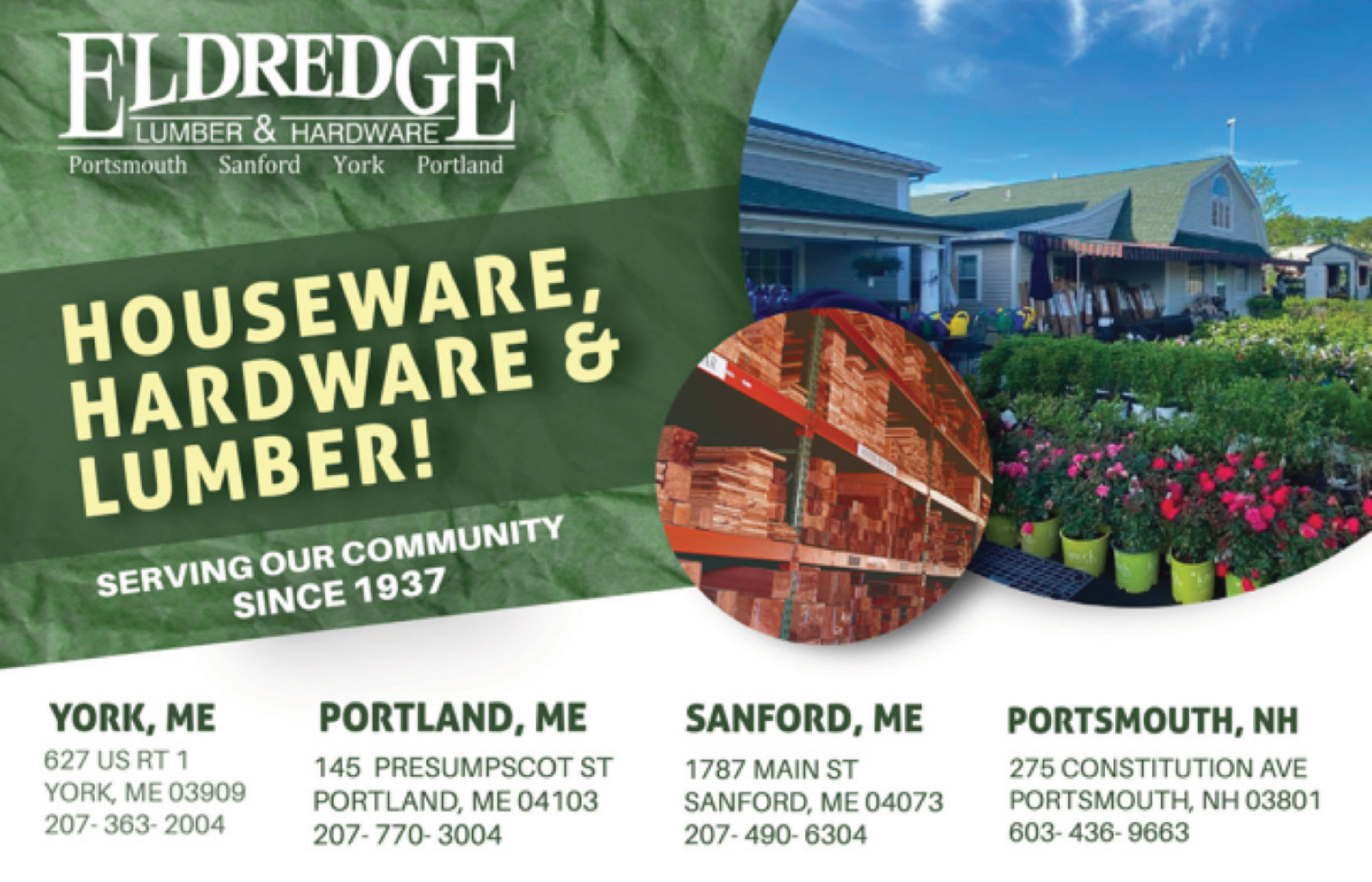Out In the Woods
- May 17th 2024
- Out in the Woods

Nature Works Hard to Produce the Delicate Lady Slipper
A lady slipper along the East Trail, McKeon Reserve
Photos: Kevin McKeon
By Kevin McKeon, Maine Master Naturalist
Probably Maine’s best known native orchid, and the provincial flower of Prince Edward Island and the state wildflower of New Hampshire, is the pink lady slipper. These beauties can be seen along many of Sanford’s trails in filtered sunlit areas along pine-lined trails and footpaths. Look for them from mid-spring through June.
The other lady slippers found in Maine are the yellow, showy, and ram’s head; the last two are rare, and the ram’s head is endangered. Rarely, the pink species will produce a white flower. Pink lady slippers live in a variety of habitats – mixed hardwood/coniferous forests, pine and hemlock stands, on rocky/mossy slopes, in semi-open birch stands – but are usually found in pine forests, in deep humus and acidic but well-drained soil, where they often form large colonies.

Lady slippers are known as deceptive flowers. They don’t produce nectar, their pollen is too sticky for insects to consume, and they are difficult to pollinate. It is the sturdy bumblebee that gets fooled into doing this.
Bees are lured by the flower’s bright color and sweet scent, struggling into the flower pouch through the front slit. But once inside, they find no food. The only way out forces the bee to rub against the flower’s reproductive organs. So, the bee deposits pollen from another lady slipper on the flower and picks up new pollen on its way out. After visiting a few of these “deceptive flowers,” the bee soon learns of its folly – that these flowers provide no nectar – and chooses to pollinate elsewhere. This leads to a low pollination rate for these orchids; but those that do get pollinated form a small brown seed capsule containing 10-20 thousand tiny seeds. These seeds get windblown over the landscape and can remain viable in the soil for years, forming seed corms as they await a friendly fungus.

Fungus? Yes, for 400 million years, over 90% of land-based plants need soil fungi to flourish. In the case of our lady slipper, it needs a certain fungus not only to grow beautiful, but for the tiny seeds to germinate. Its seeds are so small that they have no endosperm, the initial food supply for the seed embryo. So, the seeds need the fungus’s roots, or mycorrhiza, first to break open the seed, and then to feed the embryo. After three years, the lady slipper breaks ground and begins to photosynthesize – to make food from the sun. It will “pay the fungus back” with some of the food it makes. This mutually beneficial relationship between the plant and the fungus is known as symbiosis and is typical of almost all plants.
Lady slippers take many years to go from seed to mature plants and can live to be over 20 years old. After plants flower, they sometimes go dormant underground for two to three years before re-flowering.
These growing conditions are obviously next to impossible to duplicate and with 6-foot-long roots, transplantation is almost always unsuccessful. So kindly enjoy the lady slipper where it grows. Much work and patience went into its existence; let it live where it’s happy!
Editor’s note: Did you see something unusual last time you were out in the woods? Were you puzzled or surprised by something you saw? Ask our “Out in the Woods” columnist Kevin McKeon. He’ll be happy to investigate and try to answer your questions. Email him directly at: kpm@metrocast.net





